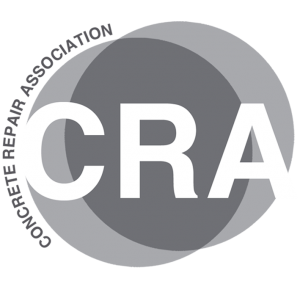Structural Concrete Alliance announces seminar date
The Structural Concrete Alliance is continuing its series of popular CPD seminars with two more regional events this Autumn.
Events are scheduled to take place on 29 October in London; and 12 November in Leeds.
The free to attend half day seminars provide delegates with an introduction to Structural Asset Protection and Repair. Industry experts describe the corrosion process explaining why it occurs and highlighting its devastating impact on buildings and infrastructure. They provide an insight into the repair techniques available for different types of structure with the aid of suitable case studies. Presentations also include an introduction to structural strengthening with fibre reinforced polymers, and an overview of sprayed concrete techniques.
The events are supported by a table top exhibition where delegates can obtain additional advice from association members.
For further information and to download a booking form visit www.structuralconcretealliance.org or call 01420 471619.
VINCI Technology wins Battersea contract
VINCI Technology Centre UK has been awarded a £1.3m contract to design, install and monitor a cathodic protection system for Battersea Power Station.
Cathodic protection is an electro-chemical process for arresting corrosion, which the company says is particularly useful when working with heritage structures.
The application method for steel-framed, masonry clad buildings was developed by Technology Centre engineers in the 1980s, and director, Russell Matthews, said: “Over the last 30 years, our team has carried out work to safeguard a range of notable structures. Battersea Power Station deserves to be protected for future generations – a task which cathodic protection will go a long way towards achieving.
“Cathodic protection is a highly sustainable approach for conducting this type of work, primarily because it is more cost effective than other methods, it creates much less waste, and it reduces CO2 emissions.”
One of London’s most iconic buildings, Battersea Power Station was designed by Sir Giles Gilbert Scott in the 1930s and remains one of the largest brick structures in Europe. Cathodic protection will be used for the first phase of the contract, to protect the steel frame in the station’s washtowers. Sales and marketing manager, Steve Shanahan, said: “This is the most exciting development to come to market for many years. Experience, expertise and team-work will be critical to the success of the programme. We have strength in depth in these areas, and are delighted to be involved in such a prestigious project.”
BAM Ritchies stabilises Hooley Cutting
BAM Ritchies has used sprayed concrete beams and columns to stabilise the Hooley Cutting in Surrey. The slope, which was above a live railway, was almost vertical in places.
The team installed 21 new concrete columns along the face at 5m centres. These columns are connected by three horizontal beams; a lower beam approximately midway up the slope; a crest beam and crest wall along the top of the slope; and an intermediate concrete beam placed between the two.
Originally conceived as a ‘shutter and pour’ operation, the sprayed concrete alternative offered considerable benefits, including a reduction in the amount of formwork and support required, while the columns were re-designed to incorporate horizontal tubes allowing the access scaffold to be erected using the concrete columns as support elements.
Following site trials, a system of simple, lightweight plywood formers was used to provide profile guides for the sprayed concrete application. The columns were sprayed in 2m lifts with plywood shuttering attached to the reinforcement cage. Some 4m3 of the 40kN concrete was sprayed across six columns each day.
An accelerated sprayed concrete material was installed by the dry mix method to provide a 40 N/mm2 concrete encapsulating the beam and column reinforcement. The sprayed concrete was virtually self-supporting, thereby imposing minimal loading on the formers. A thin ‘flash coat’ of sprayed concrete was applied and finished by hand trowelling to provide a lightly textured wood float finish.
This innovative use of sprayed concrete formed part of the 2014 Ground Engineering Award winning entry for BAM Ritchies.
Gunform rebuilds Dawlish sea wall
Sprayed Concrete specialist, Gunform International, has played an important part in the rebuilding of the sea wall at Dawlish, Devon, which had collapsed during the severe storms last winter.
The company worked between high tides to apply fast-setting fibre-reinforced sprayed concrete to stabilise storm damaged embankments, using the new Reed B20HP Concrete Pump, which incorporates an integrated accelerator dosing system.
Gunform says that sprayed concrete applied using accelerators at the correct dosage provided a high strength concrete with an early strength gain that could be applied day and night, in between high tides, preventing further damage and land slips.
The accelerated sprayed concrete can withstand wash-out from incoming tides, enabling repairs to be carried out quickly, and maximising safe working time between tides.
Dawlish was one of three recent projects the company has conducted on behalf of Network Rail.
Previously, working with AMCO on the Whiteball Tunnel refurbishment contract in Taunton, Devon, Gunform completed the application of over 550m3 SFR sprayed concrete, using Oruga spraying robots and Reed concrete pumps, ahead of time. This experience enabled both companies to respond quickly to Network Rail’s urgent request for the stabilisation works in Dawlish, which is nearby.
In addition to its work for Network Rail in Dawlish and Whiteball, Gunform also completed the spraying of over 1,200m3 SFR concrete in Holme Tunnel, near Burnley, where, following the removal of original brickwork and temporary supports, a new concrete base and structural steel arch rings were installed.
Fosroc delivers for Royal Mail
Fosroc and CRA contractors Cemplas Waterproofing and Concrete Repairs Limited have been heavily involved in providing a wide range of concrete repair solutions during the extensive refurbishment of the Royal Mail’s Mount Pleasant operational site in London.
The project required structural repair work both to floors and façades, and the work was done in conjunction with architects Boyes Rees, and main contractor Mace. The £1.8m package for repairs to the main external façade of the building required the removal of any defective render, and Cemplas employed specialist techniques to remove all the existing coatings.
Renderoc HB and Renderoc HBS high build mortars designed for vertical repairs were used to repair the substrate, and a Nitobond SBR render was used to reinstate the render. The entire surface was then levelled using Renderoc FC fairing coat, applied in 2 x 1mm layers, before applying Dekguard E2000 as a protective and decorative finish.
The Dekguard coating was supplied in a made-to-order RAL colour, with additional colours manufactured for the lettering and detailing.
In another part of the project, floor areas required major repairs. A flooring contractor applied 3,000 bags of Fosroc’s Paveroc high performance reinstatement mortar at the West Dock Basement Deck, and a further 1,300 bags of Paveroc and Patchroc GP were used to repair the floor of the external car park.
Fosroc also supplied Nitoseal MS100 for sealing the expansion joints and Dekguard S to provide a durable finish to the low level pedestrian areas.
Skyform completes tower block repairs
Skyform (Scotland) Ltd has completed a contract in the Hayton area of Aberdeen for Aberdeen City Council, involving the repair and renovation of five 18-storey blocks of flats.
The contract was originally for the repair and waterproofing of balconies, and the design and installation of new glass balcony screens. It involved a total of 450 balconies.
During the contract, the council invited Skyform to tender for all repairs required on the five blocks, including concrete repairs, replacement panel joints, new window sealants and protective coatings. The negotiations were successfully concluded and, as a result, the original contract period of 40 weeks was extended to 64 weeks to accommodate the additional scope of work.
Skyform (Scotland) Ltd says it has a very competitive edge on high rise works, because it has its own in-house suspended cradle division. At Hayton, this produced a tender 26% lower than the second placed contractor, and has since led to a follow-on contract at Ashgrove, also in Aberdeen, where the scope of work mirrors the final works at Hayton.
Weber offers integrated repair solutions
Technical mortars specialist Weber offers integrated solutions for a wide range of projects, from building renovation and refurbishment to new building developments and major civil engineering.
The company says that in the concrete repair and protection sector, its products play an important role, particularly now it is recognised that without correct design, mixing, placement and curing, the durability of reinforced concrete may be impaired.
Concrete can be affected by physical, mechanical or chemical factors. Typical physical effects are leaking water or frost attack due to porous concrete, and plastic shrinkage cracking due to poor curing; mechanical causes occur due to overloading of the structure, or impact damage; while chemical defects include corrosion of steel, acid rain and the action of chemicals.
Weber says its portfolio of products can facilitate repair in most circumstances, ranging from hand-placed materials for localised non-structural repairs, to flowable or spray solutions for mass structural replacement.
The product range includes weber.cem spray DS, weber.cem spray RS, weber.cem spray CP and weber.cem conspray. These are designed to be machine-applied by specialists to provide dense, fully compacted, homogenous, long-lasting repairs and protective overlays. weber.cem spray concretes restore the structural integrity, durability, appearance and fitness for purpose of a wide range of structures.
The company says these products can be used with additional reinforcement to strengthen and refurbish old structures. weber.cem spray concretes comply with Highways Agency specifications for repairs to highway structures.
Concrete strengthening solutions from Mapei
Mapei has 75 years experience in the manufacturer of adhesive and chemical products for the construction industry, providing solutions to help strengthen new or existing building structures.
It produces adhesives, sealants and chemical products for building, and is a specialist in the production of quality products for the installation of all types of wall and floor.
The company says its fibre composite strengthening provides a cost-effective technique which can bring great benefits to the owners of various buildings, primarily because of the speed of installation, leading to less disruption.
Mapei’s MapeWrap are uni-directional continuous carbon fibre fabrics, characterised by high and very high modulus of elasticity and high tensile strength. The fabrics are suitable for repairing reinforced concrete structures damaged by physical-mechanical action or concrete elements subjected to compressive and bending stress. Carboplate is a range of pultrused carbon fibre plates, with high resistance and flexibility, for plating pre-stressed reinforced concrete and steel structures.
The company also offers a comprehensive training programme, including ‘A Guide to Concrete Repair’, ‘Avoiding Ceramic Failures’, ‘Effective Waterproofing’, ‘Epoxy Resin & Cementitious Flooring’, ‘Fast Track Screeds’, ‘Subfloor Preparation’, and ‘Render Protected External Wall Insulation’ (EWI).
Listed building repairs by Structural Renovations
Structural Renovations Limited has now completed the concrete repairs to the three tower blocks within the Barbican Estate in the City of London. These Grade II listed buildings are of typical modern brutalist concrete construction.
A requirement of the listed status is that repairs must be almost invisible, so close cooperation was required with client, planners, English Heritage and material manufacturers. Extensive trials were undertaken to ensure compliance.
Having demonstrated that concrete cannot be repaired in patches or thin sections using traditional concrete, and that standard concrete repair material will not provide an aesthetically pleasing finish, specifications were developed using alternative techniques.
Concrete repairs were carried out using polymer modified repair mortars supplied by Remmers, and were left recessed ready to accept their colour-matched Restoration Mortar. To replicate the large black aggregate on the façade of the Barbican Tower blocks, a specially developed mortar was applied. The surfaces of the repairs were then worked by hand to expose the black aggregate.
Structural Renovations Limited says that by having an understanding of concrete repair technology, and by carrying out thorough trials, they were able to demonstrate that satisfactory colour matched repairs are possible
Oxford Hydrotechnics solves Pirelli problem
Oxford Hydrotechnics has completed a £16,000 project for Pirelli, solving its problem of how to close off four redundant abstraction chambers at the side of a canal.
The chambers presented a number of issues that hindered typical chamber closure solutions – they were fully submerged in canal water and each chamber had its own, differing set of dimensions.
Open on the canal side, with various weirs and gratings, they also had varying levels of obstruction, including silt and debris.
The challenge was to plug the chambers without affecting the canal or factory. They would also need to be water tight, a specification that presented a high level of difficulty when factoring in the open sides to the chamber.
Oxford Hydrotechnics engineers devised a solution which involved making and installing oversized geo-textile grout bags into the chambers, once these had been blown using a compressed air lance to move the silt and organic debris back into the canal. The bags were then inflated using Natcem AC (a natural cement product). As the bags were inflated, they took up the internal dimensions of each chamber.
The use of natural cement meant the solution was harmless to the environment. The use of porous Terram geotextile during the fabrication of the bags prevented them from collapsing under water pressure, and meant the canal water could be displaced as the bags were filled. The installed grout bags formed permanent water-tight seals, satisfying the requirements of both Pirelli and the Canal and River Trust.
Chris Atkins’ charity ramble success
 Chris Atkins, former chairman of the Corrosion Prevention Association (CPA) and current member of the technical committee, recently completed the Rainbow Ramble organised by the Legacy Rainbow House, accompanied by his wife, Michelle, and daughter Jessica who has cerebral palsy.
Chris Atkins, former chairman of the Corrosion Prevention Association (CPA) and current member of the technical committee, recently completed the Rainbow Ramble organised by the Legacy Rainbow House, accompanied by his wife, Michelle, and daughter Jessica who has cerebral palsy.
Jessica receives conductive therapy at Legacy Rainbow House, which needs £1 million per year to provide help and support for 200 children and their families.
The therapy was developed in Hungary, and will hopefully help Jessica to sit up, stand, and even walk.
To date, Chris and Team Jessica have raised nearly £3,500, and anyone interested in donating can do so on the website: www.justgiving.com/michelle-atkins3
Structural Concrete Alliance sponsors award
The Structural Concrete Alliance is sponsoring a new Concrete Society award to find the structural concrete project of the year.
Entries were received from members of the three trade associations which make up the Structural Concrete Alliance, with the winner to be announced by Janet Street-Porter at the Concrete Society Awards Dinner to be held at the Grosvenor Hotel, Park Lane, London on 29th October.
Members of the Concrete Repair Association (CRA), Corrosion Prevention Association (CPA) and the Sprayed Concrete Association (SCA) supplied details of the solutions they had delivered to overcome difficulties encountered in a range of demanding projects. The entries were reviewed by a panel of members from each of the Associations and three projects were shortlisted to go on to the next stage of the competition.
Speaking on behalf of the Structural Concrete Alliance, Ken Dykes declared:
“The judging panel was impressed by the high standards of the entries, which served to highlight the professionalism of CRA, CPA and SCA members. All demonstrated the depth of knowledge and skills our members possess and their ability to provide innovative solutions to even the most demanding of engineering challenges.”
“Although it was a difficult choice, the judging panel felt that the shortlisted projects best represented the expertise of the asset protection and repair industry.”
The shortlisted entries included Balvac’s repair and refurbishment of the Silver Jubilee Bridge complex in Widnes, Cheshire; BAM Ritchies’ stabilisation of the Hooley Cutting in Surrey; and Mott Macdonald’s refurbishment of Ryde Pier in the Isle of Wight.



